
Collaborative customer support helps agents resolve issues faster
With most customer support agents now working remotely, the days of getting help from a peer in the next cubicle are over. Working in isolation, agents are frustrated, issues take longer to resolve, and customers aren’t happy. But while agents are isolated, resolving a customer issue often requires input from multiple departments across the company. It was no surprise that in our research, agents ranked collaboration as the second most important part of their job, behind only customer engagement. That’s why we’ve made collaboration easier in Dynamics 365 Customer Service. With collaborative customer support powered by embedded Microsoft Teams chat and case swarming, agents can resolve issues faster—whether it requires consulting a peer, a team, a department, or an entire organization—and that makes for happier agents and customers.
Collaborative customer support starts with embedded Teams chat
With Teams collaborative experiences embedded in Dynamics 365 Customer Service, agents can get help immediately from experts across the company. AI is infused throughout the collaboration. Agents can share relevant information without extra typing or context-switching, giving them more time for the things that matter. They can chat not only with colleagues related to the case, but to agents who helped resolve similar cases.
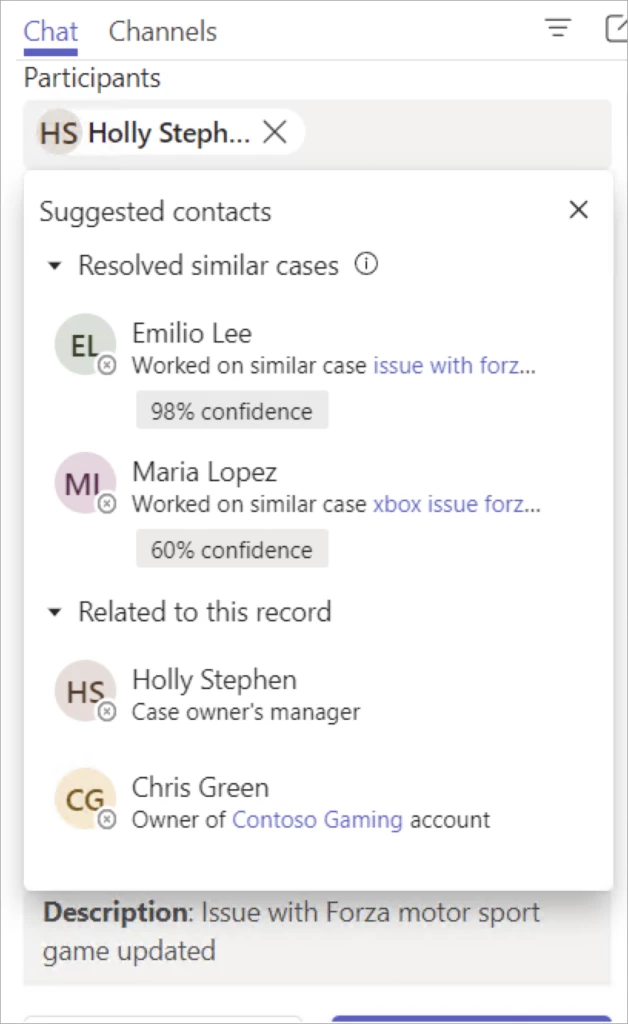
And that’s just the beginning. Because the system automatically shares relevant case details in the chat, the expert gets context quickly without more work from the agent.
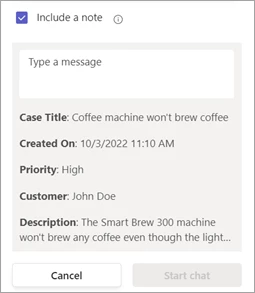
Moreover, if the agent is conversing with the customer, AI provides a summarized transcript, saving even more time.
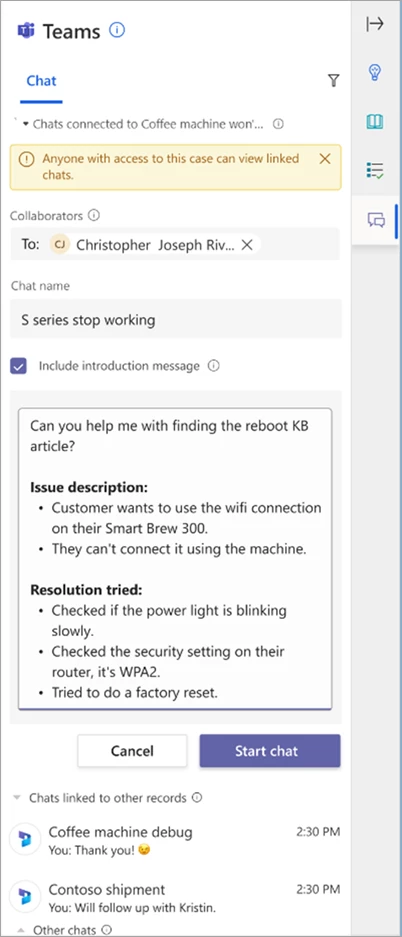
The system automatically connects collaboration chats to cases. Other agents can catch up quickly if they need to take over a case in a hand-off. And coming soon, chat details will appear in the case’s timeline, making it easy for agents to get the full context in one place.
Watch this brief video:
Add case swarming when you don’t know whom to ask
What about when agents need help to resolve a complex case and don’t know who to seek help from? The solution is case swarming. Case swarming brings together experts with the skills to resolve a case faster, regardless of where they are in the organization. They get the context they need automatically, saving agents from typing the details.
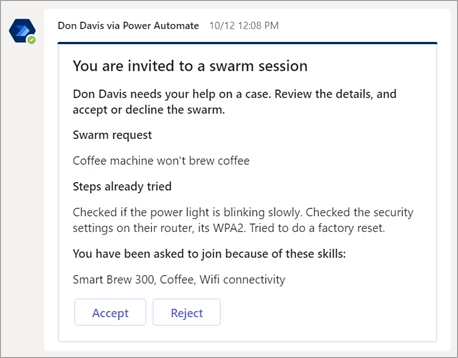
When experts accept the swarm invitation they join the swarm chat, which provides the details of the case along with the swarm request. Experts work together to guide the agent to a resolution.
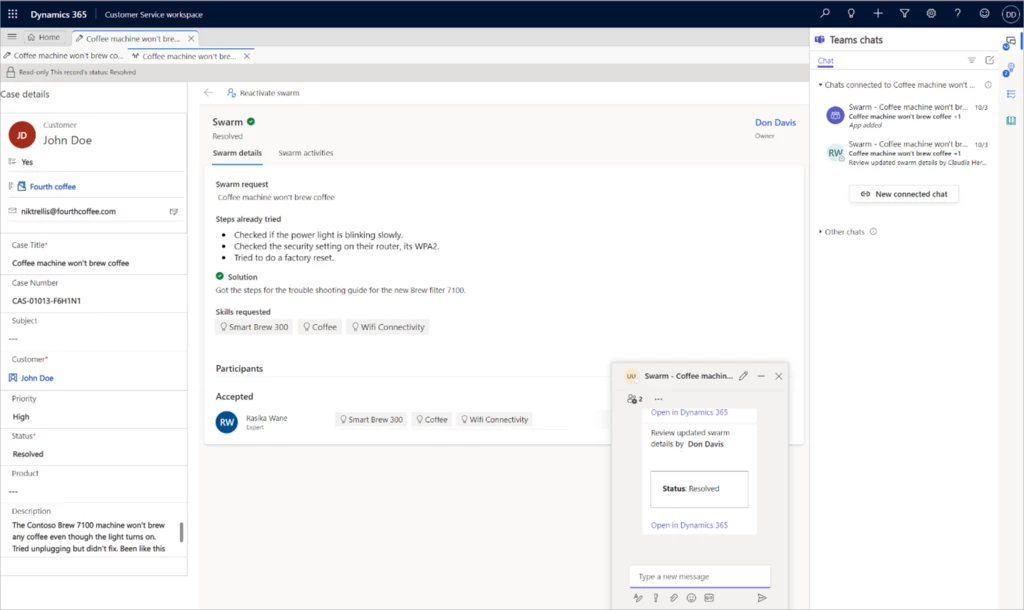
After resolving the case, the agent can create a knowledge article to preserve relevant information that colleagues can access in the future. The experts who participated in the swarm get an update, too, keeping them aware without extra effort from the agent. Case swarming makes collaborative customer support across an organization seamless.
Case swarming has another benefit. Agents can engage with customers in a more personalized way, acting as the point of contact throughout the life of the issue, and in the process, are upskilled, too.
With embedded Teams chat and case swarming, collaborative customer support is the solution, not the sore spot. Start democratizing knowledge sharing and empower your agents and customer service organization for success.
Watch this brief video:
Next steps
Start using Teams chat in your customer service organization today: Configure Microsoft Teams chats in Customer Service | Microsoft Learn
Take advantage of case swarming: Customer support swarming for agents | Microsoft Learn




